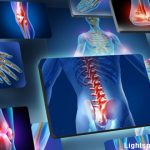Inhibition of AICAR transformylase leads to intracellular accumulation of AICAR, a molecule with potent biologic effects such as inhibition of AMP deaminase, an enzyme which diminishes the intracellular concentration of AMP by converting it to IMP, and activation of AMP-activated kinase, a potent regulator of cellular metabolism.7 One consequence of AMP deaminase inhibition is the increased release of AMP into the extracellular space where it can be converted by the action of ecto-5’nucleotidase to adenosine, a labile but potent ligand for a family of receptors that regulate many different cellular and organ functions including inflammation.8
A Closer Look at Adenosine
My laboratory first reported that treatment with pharmacologically relevant doses of methotrexate promotes intracellular AICAR accumulation in mice and that AICAR accumulation is associated with elevated adenosine levels at inflamed sites.9 Moreover, my colleagues and I suggested that adenosine might mediate the antiinflammatory actions of methotrexate based on in vitro and in vivo evidence; subsequent animal studies have demonstrated that adenosine A2A and A3 receptors mediate the antiinflammatory effects of methotrexate.1,9,10 Further evidence that adenosine and its receptors mediate the antiinflammatory effects of methotrexate is provided by the observation that blockade of adenosine receptors by agents such as caffeine in animal models of arthritis and patients with RA reduces the antiinflammatory effects of methotrexate.11–13 The primary pharmacologic action of caffeine is blockade of adenosine receptors.
As noted above, adenosine is quite labile in biologic fluids (the half-life in blood is two to eight seconds) and is, therefore, difficult to measure directly.14 Therefore, to assess the role of adenosine in the response to methotrexate, Riksen and coworkers looked at an indirect measure of increased adenosine levels, evoked forearm vasodilation, and provided evidence that patients treated with methotrexate have increased adenosine responses.15 This finding provides further evidence for the hypothesis that adenosine mediates the antiinflammatory effects of methotrexate. Further support for this hypothesis has been provided by studies indicating that polymorphisms in genes involved in the pathway mediating adenosine production are associated with therapeutic responses to methotrexate.16-18
It can be truly said that the use of methotrexate to treat RA has transformed rheumatology as a specialty and raised therapeutic expectations for our patients and, for pharmaceutical companies developing new therapeutic agents, raised the bar for registration of new drugs.
Like all drugs, methotrexate has a range of toxicities. Clearly, as noted previously, the anemia, leukocytopenia, and hair loss that may accompany methotrexate therapy are likely due to methotrexate-mediated inhibition of cellular proliferation; these side effects can be prevented by appropriate use of folic or folinic acid supplementation. Other toxicities, such as severe fatigue on the day that the methotrexate is taken, rheumatoid nodulosis, and hepatic injury and fibrosis cannot be easily explained by the effects of methotrexate on cellular proliferation. Adenosine and adenosine receptor activation likely play a role in these toxicities; in the central nervous system (CNS), adenosine plays a central role in induction of sleep (hence, the capacity of caffeine, an adenosine receptor antagonist to prevent sleep) and it is likely that methotrexate-mediated adenosine release in the CNS leads to fatigue.19 Methotrexate promotes giant cell formation by cultured human peripheral blood monocytes, an in vitro model for rheumatoid nodule/granuloma formation, and this effect is mediated by adenosine A1 receptor activation.20 Finally, increased adenosine levels mediate hepatic fibrosis and steatosis via adenosine A1, A2A, and A2B receptors.21,22 Thus, methotrexate-mediated adenosine release likely plays a role in some of the toxicities of low dose methotrexate in patients with RA.
